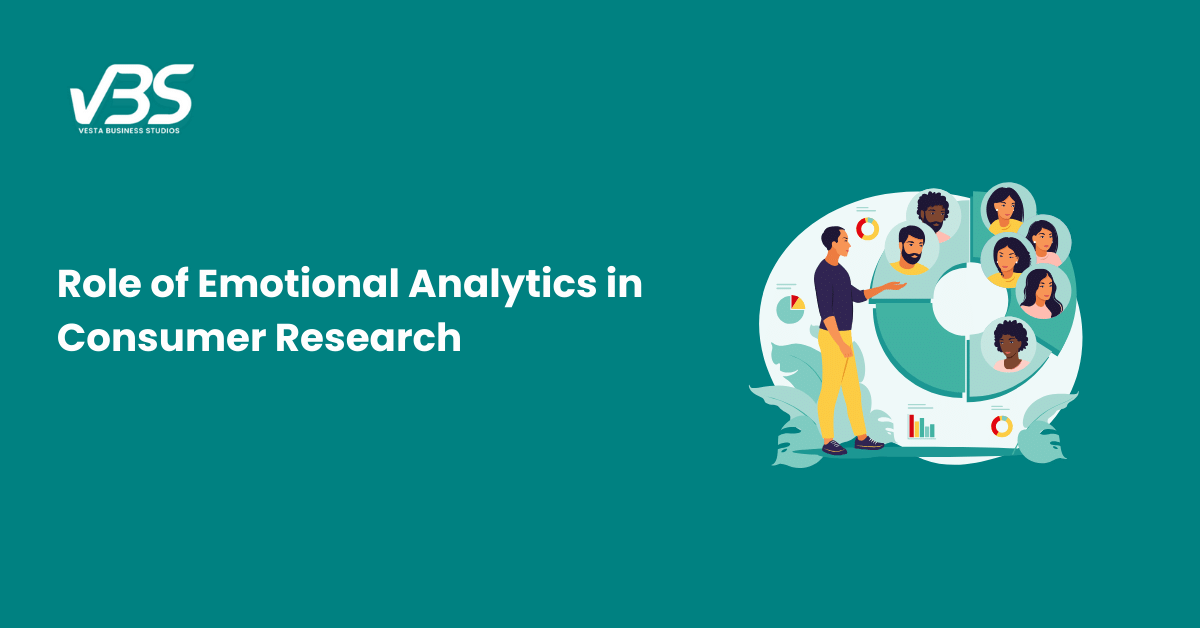Role of Emotional Analytics in Consumer Research
- Home /
- Role of Emotional Analytics in Consumer Research

-
Shivam singh
- May 28, 2024
The way we study and quantify what drives people needs to change if marketers are going to succeed. Today, marketers mostly use measures that assess left-brained thinking, or the rational part of the brain. The question of why people buy something, whether they enjoyed an advertisement, or how they would allocate their budget comes up daily.
But we all know that buying habits aren’t sensible or logical. The most powerful inspirations aren’t always easy to describe. It is necessary to resolve this disparity. Marketers, if they want to be successful in the future, will need to figure out how to gauge the emotional reasoning that underlies consumer behavior. In such a situation, emotional analytics might be useful.
The Main Verdict
Imagine, with your eyes closed, the cart you used on your most recent trip to the grocery store. There are probably some products you would never stray from, regardless of price, in today’s value-focused market, when many people are looking at pricing or exploring store brands. Why? How much better do you think they taste compared to the other brand that had a coupon that week? Or maybe you have an unconscious emotional connection, like recollections of a cherished Friday night meal or an afternoon snack shared with a grandfather.
While brand loyalty certainly plays a role, this goes well beyond that.
In order to help marketers get better insights, influence brand messaging, and increase the efficacy of marketing plans and campaigns, emotional analytics is a promising new area of study. It aids in revealing the underlying emotional drives that we don’t often give much thought to, if any at all.
Actually, subconscious and nearly impulsive decision-making accounts for 95% of the total.
Both behavioral and perceptual analytics predominate in the industry today. Behavioral analytics measure activities, whereas perceptual analytics measure affinities. Even if behavioral analytics can tell us what happened, they can’t tell us, with any degree of credibility, why it happened. When you inquire about a customer’s feelings towards a brand, all you receive is an emotional response that has been artificially rationalized. That explanation, which might or might not be true—it’s not easy to have a firm grasp on our own feelings to provide a satisfactory justification for our behavior. Despite our conscious belief that we selected choice A based on the product’s contents, there may be a far more subtle and unspoken explanation for our preference.
Read Also: Importance of Story Telling in Marketing
To better understand what is or isn’t working on an emotional level, marketers need a way to assess that spontaneous, subconscious decision-making. Everything from products and services to communication techniques and more may be fine-tuned using this knowledge to make a lasting impression on consumers and motivate them to take action. This field has a bright future ahead of it. One distinctive feature of emotional analytics is the scientific method used to observe individuals in order to compile data. Looking at people’s physical reactions, such as their facial expressions or the dilation of their pupils, allows us to measure subconscious reactions. Studies in the field of neuroscience use electroencephalogram (EEG) monitoring to deduce meaning from the signals produced by various brain regions. For instance, by monitoring when specific neurons fire and which regions of the brain light up in response to an ad, marketers can learn which sections of the commercial pique customers’ interest, and to what extent! Even though it’s been around for a while, not many people use this.
Using artificial intelligence (AI) capabilities, the future will bring an end to simply evaluating whether a consumer’s emotions are recorded in an ad; you’ll also be able to gauge the degree of those emotions.For instance, one cannot compare an angry person to someone who is simply irritated. The rate of activity or product intake is proportional to the intensity of the emotion. In the future, emotional analytics will be crucial. But it’s a key that, when utilized with a consumer-first, privacy-first frame of mind and a sense of responsibility, may open possibilities.
Conclusion
Emotions motivate people to take action; in fact, there is a fourfold increase in the likelihood that digital commercials evoking strong emotions will increase brand equity. Luckily, we can now comprehend the unconscious forces at work in consumer behavior because of developments in areas like neurology and psychology, which, when combined with new technologies like AI, provide us unprecedented insight. The emerging discipline of emotional analytics is ripe with opportunity for marketers to test the waters.

